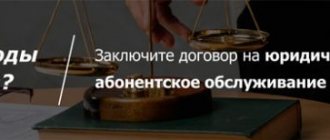Types of tax audits
In order to ensure that entrepreneurs comply with the current legislation governing the procedure for calculating the amount and paying tax payments, tax authorities conduct regular audits. During such inspections, inspectorate employees study and analyze the organization’s internal documentation and compare the information received with the information specified in the provided tax reporting. In accordance with paragraph 1 of Art. 87 of the Tax Code of the Russian Federation, tax audits are:
- Cameral. Carried out at the location of the tax office. The object of the study is the reporting compiled based on the results of the tax period and submitted by the taxpayer to the regulatory authority.
- Traveling. Conducted at the location of the organization being inspected. They are more extensive in scope and allow you to verify compliance with the procedure for paying one, several or all taxes.
Registration of results
On the last day of the inspection, the corresponding certificate is issued . Two months are allotted for drawing up the act, which serves as the result of the inspection and the basis for bringing to responsibility.
If the organization does not agree with this decision, it has the right to submit an objection and challenge the decision by attaching supporting documents to a written document. The materials are sent to fund managers, who make the final decisions.
A large seminar on audits in organizations is presented below.
Most organizations have at least once encountered requirements from the tax office. Some companies know firsthand about on-site inspections by the Federal Tax Service. But in addition to the Federal Tax Service, the activities of any employer are controlled by funds - the Pension Fund and the Social Insurance Fund. Nowadays, most of the reporting on contributions is controlled by the Federal Tax Service. The funds check all reporting for compliance with benchmarks, and also pay close attention to the use of benefits, reduced tariffs and reimbursement of funds from the fund budget. What funds analyze, what requirements they impose and how to avoid on-site inspections, we will consider below.
There are two types of checks carried out by funds:
All reports submitted to the Social Insurance Fund and the Pension Fund of the Russian Federation undergo desk audits. Such checks are carried out only for the reporting period. Three months are allotted for the desk audit from the date the report is sent, so the requirement to eliminate discrepancies and errors in the report for the first quarter, sent on April 20, 2018, may come even in July.
Tax inspection plan
It is obvious that conducting an audit (regardless of which of these categories it belongs to) is a very labor-intensive procedure that takes a lot of time and requires the involvement of highly qualified tax inspectors.
It is impossible to check all organizations operating in the territory under the jurisdiction of one branch of the Federal Tax Service in one tax period. That is why, at the end of the calendar year, tax officials draw up a special schedule, which includes individual enterprises that will be subject to audits next year. Thus, at the end of 2021, each territorial branch of the department will prepare a schedule of tax audits for 2021, containing a list of organizations subject to inspection, as well as the deadlines within which each of them must be carried out.
There is an opinion that there is simply no plan for tax audits, and the decision on the need to conduct an audit in relation to a certain enterprise is made spontaneously by tax authorities, based on the results of its current activities or as a result of receiving complaints from individuals or legal entities (including counterparties of the enterprise ). In fact, tax authorities still draw up inspection plans - this is indicated by the provisions of letters and instructions issued by the Federal Tax Service, in particular clause 3 of the Federal Tax Service letter “On VAT Refund” dated January 23, 2009 No. ШС-21-3/40.
You can find more complete information on the topic in ConsultantPlus. Free trial access to the system for 2 days.
Timing, periods and regularity
Routine inspections are carried out every three years. All other types of control are usually initiated by a problem situation, and therefore can be carried out at any time when it was recorded. A certain time is allocated to carry out the verification. Its duration depends on the expected scope of work and is estimated depending on:
- Number of people on the employer's staff;
- The number of insured persons to whom the subsidy was paid;
- The volume of funds transferred to the Social Insurance Fund;
- Elapsed time since last check.
With large volumes of work, the commission usually only needs one month to carry out control and analytical activities regarding the activities of a business entity in the field of fulfilling obligations to the Social Insurance Fund. The period of the procedure may be increased if inconsistencies in the information are identified during the operation.
Scheduled tax inspections: is it possible to preview the schedule?
Many entrepreneurs are concerned about the question: is it possible to see the plan for on-site tax audits for 2021 after its approval? Knowing that tax authorities will come with an audit, you can put your papers in order in advance, correct existing shortcomings and ensure that inspectors have access to the necessary documents. Of course, any organization should strive to comply with the rules of tax accounting and reporting at any stage of its activities, but, as practice shows, violations can be found even among the most responsible entrepreneurs.
Today, only a plan for conducting inspections for state-regulated activities can be found in the public domain - it can be downloaded on the official website of the Federal Tax Service of the Russian Federation by clicking on the link.
Plans for conducting audits in relation to other categories of taxpayers are not posted on publicly available resources and are used exclusively by employees of territorial divisions of the tax service. However, an entrepreneur can independently assess the likelihood that his company will be included in the audit plan and prepare for a successful audit.
Who's at risk
The Pension Fund of Russia and the Social Insurance Fund have developed criteria that allow them to select organizations for scheduled on-site inspections. In particular, such criteria were set out in the letter of the Pension Fund of the Russian Federation No. TM-30-24/13848, FSS of the Russian Federation No. 02-03-08/13-2872 dated December 21, 2010.
The attention of funds, and now the Federal Tax Service, can be attracted by:
- expenses financed from funds of the Federal Social Insurance Fund of the Russian Federation;
- submission of reports late;
- non-taxable payments;
- application of reduced tariffs;
- inconsistencies in calculations based on the results of desk audits;
- arrears in contributions for several periods in a row;
- constant adjustments to sent reports, etc.
To avoid claims from funds, submit all reports on time and respond to requests. Also carefully check the accrued amounts and keep all supporting documents.
Plan of on-site inspections of the Federal Tax Service: criteria for drawing up
The schedule of on-site tax audits for 2021 is compiled by employees of the Federal Tax Service based on an assessment of a number of criteria characterizing each specific enterprise. The list of such criteria is determined by the provisions of the Concept of the planning system for on-site tax audits, approved by Order of the Federal Tax Service dated May 30, 2007 No. MM-3-06/ [email protected]
Subscribe to our newsletter
Yandex.Zen VKontakte Telegram
Based on the information provided in Appendix No. 2 of this Concept, tax authorities can pay attention to an organization or individual entrepreneur if:
- The amount of tax payments made by the taxpayer to the budget differs significantly from the average level of tax burden on entrepreneurs that has developed in the industry as a whole. The values of this indicator for different types of economic activity are given in Appendix No. 3 of the Concept.
- For two or more reporting periods, the organization operates at a loss.
- During the reporting period, the taxpayer received one or more tax deductions in a significant amount. In this case, a deduction is recognized as significant if the share of VAT deductions is equal to or exceeds 89% of the total tax amount calculated for the same reporting period, the duration of which is 1 calendar year.
- The growth rate of expenses exceeds the growth rate of income.
- The results of the financial and economic activities of the enterprise have repeatedly approached the values established as a limitation for the use of any taxation regime.
- The amount of expenses incurred during the year of entrepreneurial activity is as close as possible to the amount of income received for the same year (this criterion is used when assessing the performance of individual entrepreneurs).
Tax inspection schedule: additional criteria for drawing up
The following circumstances may also be significant for inclusion in the on-site inspection plan for a particular enterprise:
- The amount of wages paid to employees of an enterprise differs significantly to a lesser extent from the average amount of earnings paid to employees working in the same industry. When forming the staffing table and setting the amount of remuneration, the Federal Tax Service recommends that employers be guided by statistical data posted on the websites of the territorial branches of Rosstat, as well as the departments of the Federal Tax Service of the Russian Federation. In addition, such information can be obtained by sending an official request to Rosstat or the tax authority. In addition, when forming a plan for on-site inspections, tax officials are guided by information received during the consideration of complaints from citizens and legal entities that the company pays so-called gray wages, as well as about violations present during the registration of employees as employees of the company.
- During the implementation of financial and economic activities by an enterprise, there is interaction with counterparties who have the status of resellers or intermediaries; At the same time, the taxpayer is not able to justify the economic feasibility of using such a model of enterprise functioning.
- The taxpayer did not provide explanations or documents requested by the tax authority, and if the documents were destroyed or damaged, information about their destruction or damage.
Other criteria for assessing taxpayers
In addition to the above reasons for initiating a tax audit, the following factors may attract the attention of tax authorities:
- The taxpayer was repeatedly removed from tax registration in one branch of the Federal Tax Service and registered in another.
- The accounting data submitted to the regulatory authority contains information about the profitability indicator formed during the reporting period, which differs significantly from the average profitability indicator for the industry as a whole.
- The activities carried out by the enterprise have a high level of risk.
When forming a plan for conducting tax audits, Federal Tax Service employees evaluate each company according to each of the given criteria - the more matches they can identify, the higher the likelihood that the corresponding company will be included in the created schedule.
What does the Pension Fund check?
Until 2021, the Pension Fund controlled the calculation and payment of contributions for pension and compulsory health insurance. Since 2017, this control has passed to the Federal Tax Service.
The Pension Fund can check the calculations of contributions for periods up to 2021. For verification, the Fund’s specialists can request the following documents (clause 7.4 of the Methodological Recommendations, approved by order of the Board of the Pension Fund of the Russian Federation dated 03.02.2011 No. 34R):
- constituent documents;
- orders on accounting policies;
- licenses;
- calculations of accrued and paid insurance premiums;
- balance;
- cards and analysis of accounts relating to contributions;
- bank statement, etc.
Tax audit: list of companies
In an attempt to find an audit plan for the coming year on the Internet, an entrepreneur may end up on one of the many resources that offer the service of assessing the likelihood that the tax authorities included the enterprise in the schedule they developed. Such sites do not have any access to official documentation used by the Federal Tax Service - as a rule, the information they provide is based on publicly available criteria specified in the Concept. That is why you should not trust information received from such sources.
To minimize the risk of being included in the list of companies in respect of which scheduled audits will be carried out, the taxpayer should conscientiously fulfill his tax obligations and comply with the requirements established by the legislator for the procedure for carrying out tax accounting at the enterprise.
***
So, scheduled tax audits for 2021, included by tax authorities in the consolidated plan for conducting on-site audits, are not included in the list of publicly available information. This means that taxpayers cannot know in advance that such an audit is planned for them - as a rule, they receive information about the upcoming visit of the inspector several days before the start of the event. The official list of on-site inspections planned by tax authorities is compiled only for those enterprises that are engaged in state-regulated activities. Companies that do not fall into this category can independently study the results of their financial and economic activities and, based on the information received, assess the likelihood of including them in the tax audit plan.



